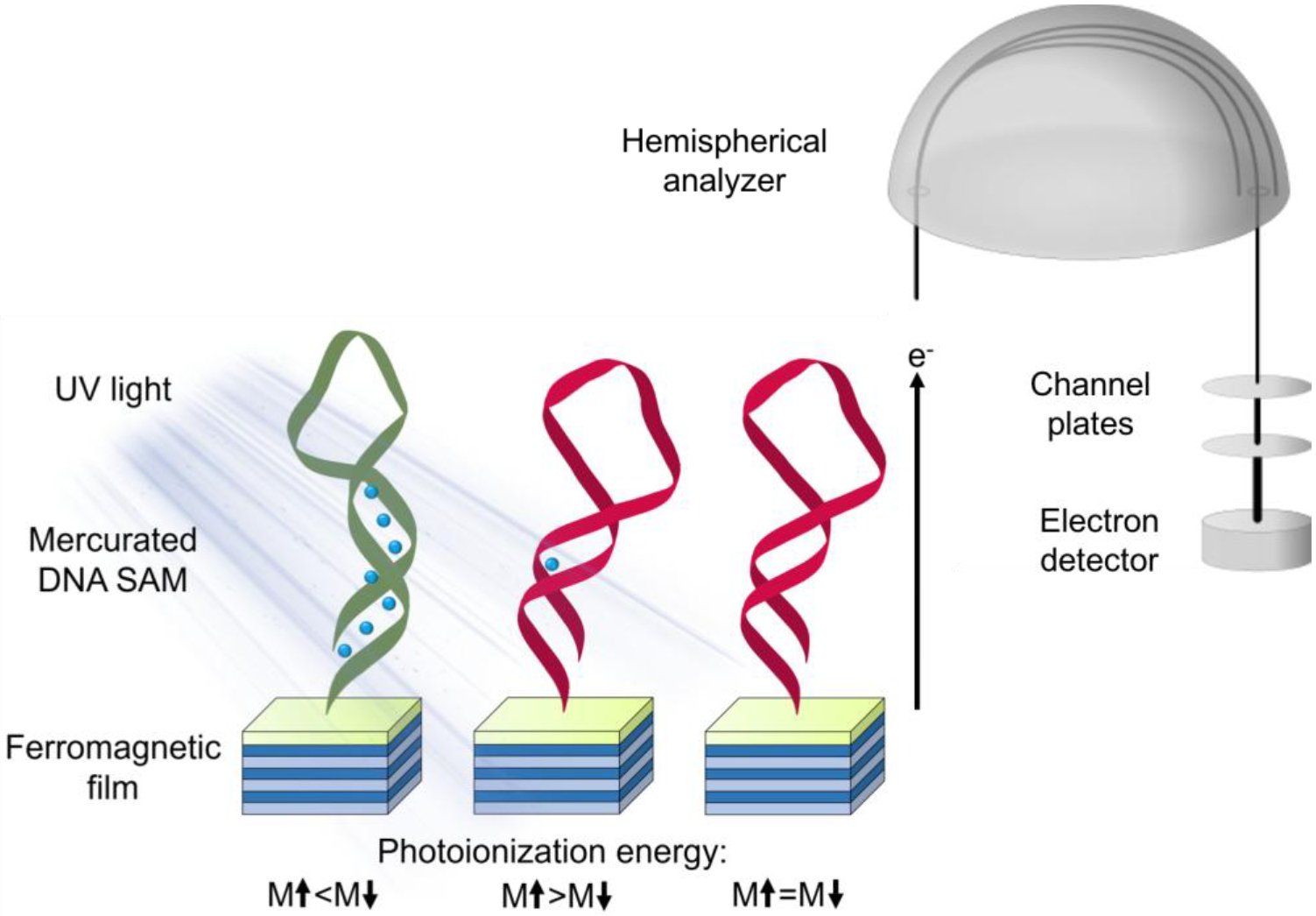Figure 1.

Experimental schematic illustrating photoemission from ferromagnetic surfaces functionalized with left- (green) or right-handed (red) DNA hairpins containing divalent mercury ions. Photoelectrons emitted from magnetized substrates undergo spin-selective scattering cross-sections with the DNA molecules due to the chiral-induced spin selectivity effect. Ionizing collisions due to spin-up vs spin-down photoelectrons of sufficient energy with DNA lead to differential charging, manifested as substrate magnetization (M)-dependent photoionization energies.
